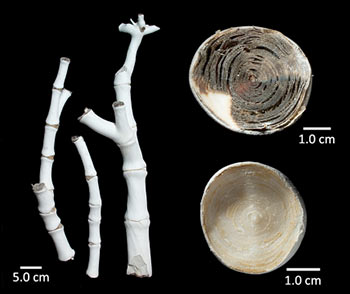The Hill Biogeochemistry Lab at BML aims to understand climate change in the past and present ocean, spanning geologic (past 1 million years) to human timescales (past 100 years, and future). We are interested in large-scale ocean processes (e.g., circulation changes) down to bays, estuaries, and coastal environments. We approach this research by using microfossils (literally, very small fossils!) and corals to determine rates and magnitude of climate change, the response and adaptation of species to environmental change, and the impact of ocean acidification on marine ecosystems. This research is motivated by a need to understand the Earth’s climate system to predict future consequences of anthropogenic climate change. 
There are several ongoing projects in the Hill lab and significant accomplishments over the past five years. Work on sediments from the California margin has involved several BML, Geology and Ecology graduate students and resulted in peer-reviewed publications and presentations at national and international conferences. In particular, our work has documented how rapidly marine species respond to temperature and oxygenation change in the past 20,000 years. This research is supported by the National Science Foundation via grants to Professor Hill and collaborators at UC Santa Barbara and UC Davis (A. Russell). This work is also the subject of a NSF Early Career Award to Professor Hill, which will support the expansion of this research and the development climate change curricula for 6th grade classrooms over the next 5 years.
The Hill lab also utilizes deep-sea corals – most of them from the California coast – to reconstruct climate events over the past several hundred years. Deep sea “bamboo” corals grow a skeleton with annual bands that can be used to reconstruct environmental change, much like ‘tree rings’ on land. Professor Hill and former postdoctoral scholar Michelle LaVigne (now Assistant Professor at Bowdoin College) have published three papers on this topic, aimed at using bamboo corals to reconstruct temperature, nutrient, and productivity changes over the past several hundred years. This work is supported by grants from the National Science Foundation and the National Oceanographic and Atmospheric Administration.

